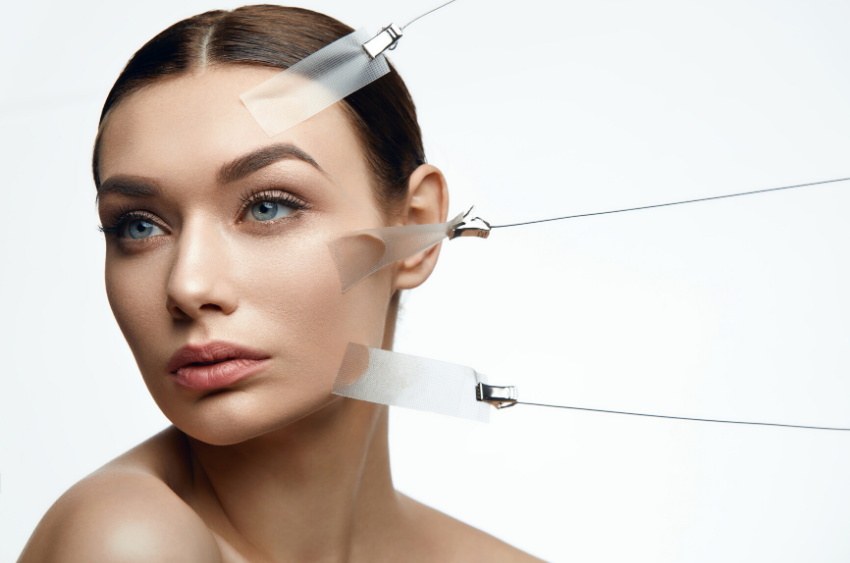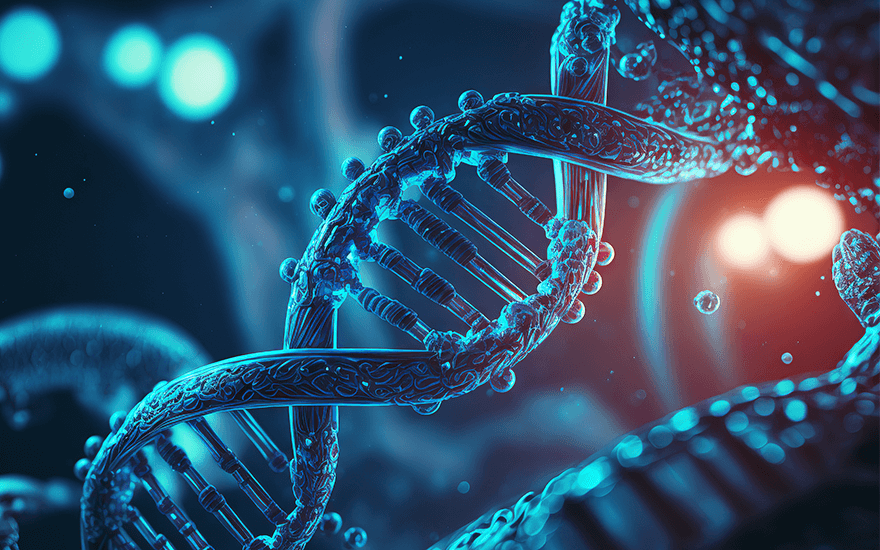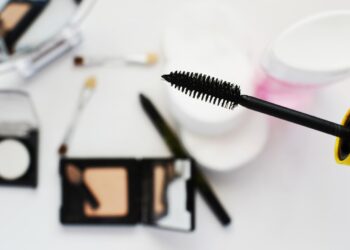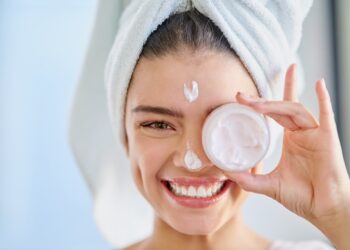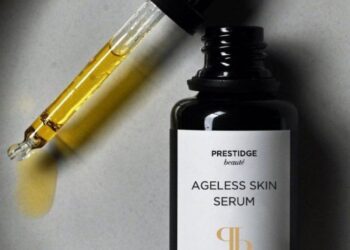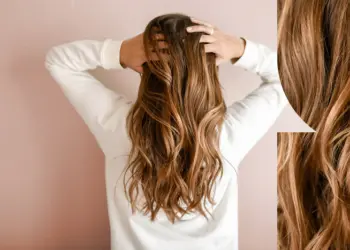Bio-Hacking Your Skin’s Natural Beauty: The Ultimate Inside-Out Guide
In the relentless pursuit of youthful, radiant skin, a new philosophy is emerging that moves beyond mere surface-level treatments. This is the world of skin bio-hacking, a strategic and scientific approach to optimize your skin’s biology from the inside out. Far from being a fleeting trend, bio-hacking is a movement that empowers you to take control of your cellular performance, using data, science-backed protocols, and intentional lifestyle adjustments to unlock your skin’s inherent regenerative potential. This comprehensive guide will deep-dive into the core principles, practical techniques, and advanced technologies that form the foundation of this revolutionary path to lasting, natural beauty.
Understanding the Core Philosophy of Skin Bio-Hacking
At its heart, bio-hacking is about turning your body into a finely-tuned machine, and when applied to dermatology and aesthetics, it means treating the skin not just as a barrier, but as a direct readout of your internal health. A healthy glow isn’t just cosmetic; it’s a visible sign of optimal function across several key biological systems.
The core difference between traditional skincare and skin bio-hacking is a fundamental shift in focus: traditional methods often aim for correction after damage has occurred (e.g., treating a wrinkle), while bio-hacking prioritizes optimization to prevent the damage in the first place and maximize the skin’s natural regeneration cycles. This involves understanding and influencing complex pathways like mitochondrial function, cellular senescence, and the stress response.
The Cellular Pillars of Skin Longevity
To truly bio-hack your skin, you must understand the key cellular processes that govern aging and vitality. Optimizing these four pillars is the goal of every strategy detailed in this article:
A. Mitochondrial Health and Energy Production: Mitochondria are the powerhouses of your skin cells. As we age, mitochondrial efficiency declines, leading to less cellular energy (ATP) for vital functions like collagen production and repair. Bio-hacking targets the preservation and boosting of mitochondrial function to keep cells running optimally.
B. Cellular Senescence (The ‘Zombie Cell’ Effect): Senescent cells are damaged, aging cells that stop dividing but refuse to die. They secrete inflammatory compounds that harm neighboring healthy cells, accelerating the aging process. Skin bio-hacking employs strategies to clear these “zombie cells” to maintain a youthful cellular environment.
C. Autophagy and Cellular Detoxification: Autophagy is the body’s natural recycling program, where damaged cell parts are broken down and removed. This process is crucial for detoxification and cellular renewal. Practices that stimulate autophagy are key to maintaining clear, healthy skin.
D. Epigenetic Resilience: Your genes load the gun, but your lifestyle pulls the trigger. Epigenetics refers to the changes in gene expression caused by external factors. Bio-hacking aims to influence your epigenome—through diet, environment, and specific supplements—to keep your skin’s “youthful genes” switched on and “aging genes” silenced.
Part I: The Internal Optimization Protocol (The Inside-Out Approach)
The radiant skin you desire is cultivated primarily through what you put into your body, not just what you put on it. This internal optimization protocol is the bedrock of effective skin bio-hacking.
1. Advanced Nutritional Bio-Hacks for Skin
Your diet is arguably the most powerful tool in your skin bio-hacking arsenal. It directly impacts inflammation, hormone balance, and cellular repair.
A. Targeting the Skin Microbiome and Gut Health
The gut-skin axis is a critical connection. An imbalance in your gut flora (dysbiosis) can manifest as inflammation, acne, eczema, and premature aging on the skin.
- Prioritize Fermented Foods: Incorporate high-quality sources of living bacteria like kimchi, sauerkraut, and kefir to maintain a diverse and robust gut flora.
- Increase Soluble and Insoluble Fiber: Found in vegetables, fruits, and whole grains, fiber feeds beneficial gut bacteria, which in turn produce short-chain fatty acids (SCFAs) that have anti-inflammatory effects throughout the body, including the skin.
- Avoid Inflammatory Triggers: Highly processed foods, refined sugars, and excessive omega-6 oils are pro-inflammatory and should be severely limited.
B. Essential Supplements for Cellular Support
Targeted supplementation can provide the high-octane fuel and signaling molecules your skin needs for regeneration.
- Collagen Peptides: Consuming hydrolyzed collagen peptides provides the building blocks (amino acids) your body needs to produce its own collagen, supporting skin elasticity and hydration. Look for marine or bovine sources.
- Nootropic and Anti-Aging Molecules:
- Nicotinamide Adenine Dinucleotide (NAD+) Precursors (NMN/NR): NAD+ is a vital coenzyme that fuels sirtuins, known as longevity genes. Boosting NAD+ levels is a premier bio-hack for cellular repair and slowing biological aging, directly benefitting skin structure.
- Urolithin A: This postbiotic compound, often derived from pomegranates, supports mitochondrial function by promoting mitophagy (the selective removal of damaged mitochondria), making cells more efficient.
- Glutathione: The body’s “master antioxidant,” glutathione fights oxidative stress, a key driver of skin aging, and supports detoxification pathways that can reduce breakouts and dullness.
C. Strategic Hydration and Mineral Balance
Hydration is non-negotiable for plump, resilient skin.
- Optimal Water Intake: Aim for filtered, clean water consumption throughout the day, often calculated as half your body weight in ounces (or 2-3 liters).
- Electrolyte Integration: Add a pinch of high-quality, mineral-rich salt (like Himalayan or Celtic sea salt) or a clean electrolyte mix to your water. Electrolytes are crucial for cellular hydration and transport, ensuring water gets into the cells, not just around them.
Part II: Lifestyle Hacking for Epigenetic Harmony
Your daily routines exert profound control over your gene expression. Optimizing these habits creates an internal environment where your skin cells can thrive, dramatically enhancing your natural beauty.
2. Sleep: The Ultimate Overnight Skin Regeneration Protocol
Sleep is when your skin performs its most intense repair work. Skimping on quality sleep is one of the biggest de-bio-hacks you can commit.
- The 7-9 Hour Rule: Aim for a consistent 7 to 9 hours of quality, uninterrupted sleep per night. During deep sleep, the production of Human Growth Hormone (HGH) peaks, which is essential for collagen synthesis and cellular repair.
- Circadian Rhythm Optimization: Maintain a strict, regular sleep-wake cycle to align with your natural circadian rhythm. Exposure to bright light first thing in the morning and minimizing blue light exposure 1-2 hours before bed helps regulate the sleep hormone melatonin, ensuring deeper, more regenerative sleep cycles.
- Optimize the Sleep Environment: A cool, dark, and quiet room maximizes deep and REM sleep, allowing your skin’s nocturnal repair cycle to function optimally. Silk or satin pillowcases can also minimize friction and compression wrinkles.
3. Stress Management and Cortisol Control
Chronic stress floods the body with cortisol, a hormone that acts as a powerful aging accelerator for the skin. Cortisol breaks down collagen, compromises the skin barrier, and triggers inflammation (often seen as acne or redness).
- The Power of Breathing: Incorporate short, structured breathing exercises (e.g., box breathing) throughout the day to instantly activate the parasympathetic nervous system (rest and digest mode), lowering cortisol.
- Mindfulness and Movement: Regular, moderate-intensity exercise—especially those incorporating flow like yoga or Tai Chi—helps metabolize excess stress hormones. Daily mindfulness or meditation practice, even for 10 minutes, can rewire the brain to be less reactive to stressors.
- Hormetic Stressors (The Good Stress): Controlled exposure to mild stressors can build resilience. Examples of beneficial hormonal stressors include:
- Cold Exposure: Short bursts of cold showers or cryotherapy can activate the body’s anti-inflammatory pathways.
- Sauna Use (Heat Therapy): Regular sauna sessions increase circulation, promote detoxification via sweating, and stimulate heat shock proteins, which aid in cellular repair.
4. Intermittent Fasting and Autophagy Activation
Intermittent fasting (IF) is a powerful metabolic bio-hack that directly benefits the skin by inducing autophagy.
- The Autophagy Window: A fasting window of 14-16 hours typically starts to activate the cellular cleanup process of autophagy, leading to the removal of damaged proteins and senescent cells. This cellular renewal process improves skin clarity and elasticity.
- Stabilize Blood Sugar: Fasting helps regulate insulin sensitivity. Spikes in blood sugar (glycation) lead to the formation of Advanced Glycation End products (AGEs), which stiffen collagen fibers and cause wrinkles. IF helps minimize this damage, often called the “sugar aging” effect.
Part III: The External Bio-Hacks: Topicals and Technologies
While the internal environment is paramount, external strategies leverage cutting-edge technology and science-backed ingredients to directly enhance skin function and support cellular vitality.
5. Advanced Topical Bio-Hacks
Moving beyond basic moisturizing, bio-hacked topicals use intelligent ingredients that signal the skin to behave more youthfully.
A. Signal-Peptides and Growth Factors
Peptides are short chains of amino acids that act as messengers, telling your skin cells to perform specific functions.
- Copper Peptides: Known to promote wound healing, reduce inflammation, and stimulate collagen and elastin production.
- Neuropeptides: Work to relax the muscle contractions that lead to expression lines, offering a topical alternative to neurotoxin-based injectables.
- Epidermal Growth Factors (EGF): These powerful proteins signal skin cells to accelerate regeneration, repair damage, and boost the production of vital skin components.
B. Mitochondrial and Epigenetic Skincare
These products feature molecules designed to influence cellular energy and gene expression:
- Antioxidants (e.g., Vitamin C, Astaxanthin): Combat oxidative stress by neutralizing free radicals that break down collagen. Vitamin C is also a critical cofactor in collagen synthesis.
- Niacinamide (Vitamin B3): A versatile bio-hack that supports the production of NAD+, strengthens the skin barrier, reduces inflammation, and minimizes pore appearance.
- Retinoids (Vitamin A derivatives): These are the gold standard for topical anti-aging, effectively modulating gene expression to accelerate cell turnover and boost new collagen synthesis.
6. The Technology Toolkit: At-Home and In-Clinic Devices
Modern technology provides precise tools to deliver bio-hacks that penetrate deeper than traditional creams, directly targeting cellular mechanisms.
A. Red and Near-Infrared Light Therapy (LED)
LED therapy is one of the most accessible and clinically-backed skin bio-hacks.
- How it Works: Specific wavelengths of red light (around 630-700 nm) and near-infrared light (around 700-1000 nm) penetrate the skin and are absorbed by the mitochondria. This absorption boosts ATP production, reducing inflammation and accelerating cellular repair and collagen synthesis.
- Practical Application: Regular use of high-quality at-home LED masks or professional-grade panels is a foundational piece of any bio-hacking routine for boosting skin firmness, tone, and healing capacity.
B. Microcurrent and Radiofrequency
These technologies use electrical energy to stimulate or heat the skin’s layers.
- Microcurrent: Uses low-level electrical currents to mimic the body’s natural current. This can lift and tone facial muscles, giving an immediate yet temporary ‘face-lift’ effect, while also boosting ATP production for longer-term cellular benefits.
- Radiofrequency (RF): Heats the deeper layers of the skin (the dermis) without harming the surface (epidermis). This controlled thermal energy causes existing collagen to immediately contract and, more importantly, triggers a profound wound-healing response that results in long-term, new collagen and elastin formation.
C. Microneedling and Regenerative Treatments
These treatments leverage the body’s own healing response to regenerate tissue.
- Microneedling (Collagen Induction Therapy): Involves creating thousands of microscopic channels in the skin. This controlled micro-injury immediately triggers the healing cascade, massively boosting collagen and elastin production. It’s an essential hack for improving texture, scars, and fine lines.
- Platelet-Rich Plasma (PRP) or Exosomes: Often combined with microneedling, these treatments use highly concentrated growth factors (from your own blood in the case of PRP, or lab-derived from stem cells in the case of exosomes) to supercharge the healing and regenerative process. They deliver potent cellular signals that dramatically enhance collagen production and reduce recovery time.
Part IV: Structuring Your Personalized Bio-Hacking Protocol
The most effective bio-hacking is always personalized. What works for one person may not be optimal for you. The journey begins with deep self-assessment and data tracking.
7. Assessing Your Biological Blueprint
Before you start any major protocol, gather data to establish a baseline.
A. Track Your Internal Metrics:
- Sleep Quality: Use a wearable device (like a smart ring or watch) to track metrics like Heart Rate Variability (HRV), deep sleep, and REM sleep. Low HRV is often an indicator of high stress, which directly impacts skin health.
- Inflammatory Markers: Consider blood tests to check for markers like C-Reactive Protein (CRP) to monitor systemic inflammation.
- Hormone Panels: Understanding your sex hormones (estrogen, testosterone) and stress hormones (cortisol) can reveal underlying issues that are manifesting on your skin.
B. Evaluate Environmental Exposures:
- Toxin Load: Assess exposure to environmental toxins, including those in cleaning products, cookware, and personal care products. Many chemicals are endocrine disruptors that can negatively affect hormonal balance and skin function.
- Air Quality: Both indoor and outdoor air quality can contribute to oxidative stress and inflammation in the skin. Investing in a quality air purifier can be a significant environmental hack.
8. The Weekly Bio-Hack Integration Plan
A successful bio-hacking strategy integrates these practices into a seamless lifestyle, not just a temporary routine. A sample schedule highlights the synergy:
The key is consistency and stacking: layering hacks (like combining microneedling with PRP) and maintaining a routine over time to produce cumulative, lasting results.
Conclusion
Skin bio-hacking is more than just a set of techniques; it is a mindset rooted in proactive optimization and cellular accountability. By merging the disciplines of science, nutrition, and strategic technology, you shift the conversation from simply covering up the signs of aging to actively influencing the biological processes that govern your skin’s health and appearance.
Embracing this holistic, inside-out approach means treating your skin as a reflection of your overall wellness. You are not fighting against time; you are optimizing your biology to thrive in it. By implementing these data-driven protocols—from managing cortisol and optimizing sleep to utilizing cutting-edge light therapy and cell-signaling topicals—you can unlock a level of natural radiance and resilience that traditional skincare alone cannot achieve. The ultimate beauty hack is the commitment to being your own primary bio-engineer.


